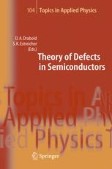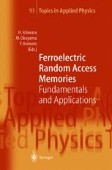Search
Search Results
-
Empirical Molecular Dynamics: Possibilities, Requirements, and Limitations
Classical molecular dynamics enables atomistic structure simulations of nanoscopic systems to be made. The method is extremely powerful in solving...
-
Light Induced Effects in Amorphous and Glassy Solids
In this Chapter, we discuss how exposure to light can affect the properties of disordered materials and review our recent computational studies of...
-
Multiscale Modeling of Defectsin Semiconductors:A Novel Molecular-Dynamics Scheme
Now that the modeling of simple semiconductor systems has become reliable, accurate and routine, attention is focusing on larger scale, more complex...
-
Defect Theory: An Armchair History
This introductory chapter begins with a summary of the developments of the theory of defects in semiconductors in the past 50 years. This is followed...
-
Dynamical Matrices and Free Energies
The calculation of the entire dynamical matrix of a periodic supercell (containing a defect or not) provides several most useful pieces of...
-
Supercell Methods for Defect Calculations
Periodic boundary conditions enable fast density-functional-based calculations for defects and their complexes in semiconductors. Such calculations...
-
Defects in Amorphous Semiconductors: Amorphous Silicon
Defects in disordered (amorphous) semiconductors are discussed, with an emphasis on hydrogenated amorphous silicon. The general differences between...
-
Quasiparticle Calculations for Point Defects at Semiconductor Surfaces
We present a quantitative parameter-free method for calculating defect states and charge-transition levels of point defects in semiconductors. It...
-
The Sputtering Technique
In this chapter, the formation of ferroelectric films using the sputtering technique is described. A main topic is a mass production system...
-
Novel Si-Substituted Ferroelectric Films
In this chapter, properties of novel Si-substituted ferroelectric films are presented. The films are a solid solution between Bi...
-
Overview
A review on ferroelectric thin films used for nonvolatile random access memories is given. Particular attention is paid to fundamental...
-
Capacitor-on-Metal/Via-Stacked-Plug (CMVP) Memory Cell Technologies and Application to a Nonvolatile SRAM
A capacitor-on-metal/via-stacked-plug (CMVP) memory cell was developed for the 0.25 micr meter CMOS logic embedded FeRAM. Using a 445 C MOCVD...
-
The Application of FeRAM to Future Information Technology World
The future information technology world needs a simple identification and secure information storage medium. The advanced smart card is a...
-
High-Density Integration
Ferroelectric random access memory (FeRAM) has been pursued as a promising new memory due to its ideal memory properties, such as fast random...
-
A Chemical Approach Using Liquid Sources Tailored to Bi-Based Layer-Structured Perovskite Thin Films
The electrical properties of Bi-based layer-structured perovskite compounds strongly depend on their anisotropic crystal structure. Because of...
-
Chain \protect\mbox{FeRAMs}
A chain FeRAM (TM) is a solution for future high-density and high-speed nonvolatile memory. One memory cell consists of one transistor and one...
-
Recent Development in the Preparation of Ferroelectric Thin Films by MOCVD
Recent research by our group, concerned with the preparation of ferroelectric thin films by MOCVD, is summarized. MOCVD has been investigated as a...
-
The Calculation of Free-Energiesin Semiconductors: Defects, Transitionsand Phase Diagrams
In this chapter we review a series of novel techniques that make possible the efficient calculation of free energies in condensed-matter systems,...
-
Marker-Method Calculations for Electrical Levels Using Gaussian-Orbital Basis Sets
The introduction of defect-related states in the bandgap of semiconductors can be both advantageous and deleterious to conduction, and it is...
-
Nanoscale Phenomena in Ferroelectric Thin Films
In this chapter, recent progress in our group in the area of thin-film ferroelectrics is reviewed. The specific focus is on nanoscale...
